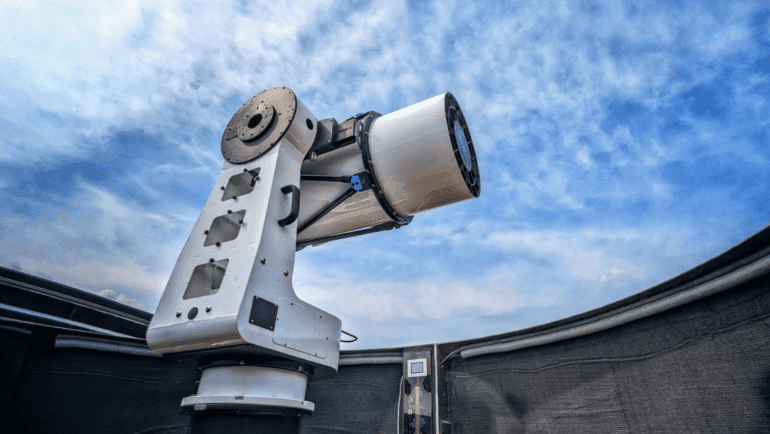- The Pentagon seeks AI solutions to address escalating risks posed by space weaponry.
- Slingshot Aerospace introduces Agatha, an AI system designed to detect anomalous behavior in satellite constellations, potentially indicating threats.
- Agatha’s contract with DARPA signifies a significant advancement in space surveillance capabilities.
- Dylan Kesler of Slingshot Aerospace highlights the challenge of monitoring crowded low-Earth orbit (LEO) and the necessity for sophisticated AI-driven approaches.
- China’s ambitious satellite deployment plans exacerbate the complexity of space monitoring.
- Agatha’s efficacy is validated through rigorous testing with simulated and real-world data, demonstrating its ability to enhance space situational awareness.
Main AI News:
In the evolving realm of space security, the Pentagon grapples with the escalating presence of weaponry beyond Earth’s bounds. The proliferation of objects poised to infiltrate low-Earth orbit compounds the challenge of monitoring potential threats. Addressing this issue head-on, Slingshot Aerospace, a California-based firm, introduces a groundbreaking AI solution named Agatha, tailored to discern peculiar behaviors amidst sprawling satellite constellations—a telltale sign of spaceborne weaponry or other looming hazards.
Recently, Slingshot Aerospace clinched a pivotal contract with the Defense Advanced Research Projects Agency (DARPA) for Agatha, signaling a significant stride in space surveillance capabilities. Dylan Kesler, Director of Data Science and AI at Slingshot Aerospace, underscores the complexity of detecting clandestine maneuvers in the increasingly congested low-Earth orbit (LEO), contrasting it with the relatively straightforward task of monitoring geosynchronous orbit (GEO). Kesler illustrates this with the example of the Russian Luch satellite’s anomalous deviation in 2015, underscoring the potential vulnerabilities posed by such maneuvers.
As the orbital landscape teems with satellites, spotting aberrant behavior becomes increasingly arduous. China’s recent announcement of plans to launch a staggering 10,000 satellites into LEO compounds this challenge. Kesler emphasizes the imperative for enhanced data processing capabilities to navigate this labyrinth of orbiting assets swiftly and accurately. Traditional methods no longer suffice; the era demands sophisticated approaches like inverse reinforcement learning to discern subtle deviations amidst vast constellations.
Kesler highlights the multifarious factors that could trigger suspicious behavior in individual satellites within expansive constellations. The overarching objective is early detection, empowering stakeholders like Space Command to deploy intelligence resources promptly to ascertain the underlying causes. However, the absence of tangible data on space weaponry poses a daunting obstacle. How can Slingshot Aerospace validate the efficacy of its AI system in detecting such elusive threats?
“We challenged it with both the simulated data and then we crossed the sim into real,” Kesler explains. The company rigorously tested Agatha’s capabilities through simulated scenarios before deploying it to analyze existing satellite constellations in space. Remarkably, Agatha not only identified anomalies within real-world constellations but also uncovered potential malfunctions that had eluded satellite operators’ notice, underscoring its efficacy in enhancing space situational awareness.
Conclusion:
The emergence of AI-driven solutions like Agatha marks a paradigm shift in space surveillance, offering unparalleled capabilities to mitigate evolving threats in an increasingly congested orbital environment. This trend signals a burgeoning market for innovative technologies aimed at safeguarding space assets and enhancing national security interests. Companies investing in AI-driven space surveillance solutions stand poised to capitalize on this burgeoning market demand.

